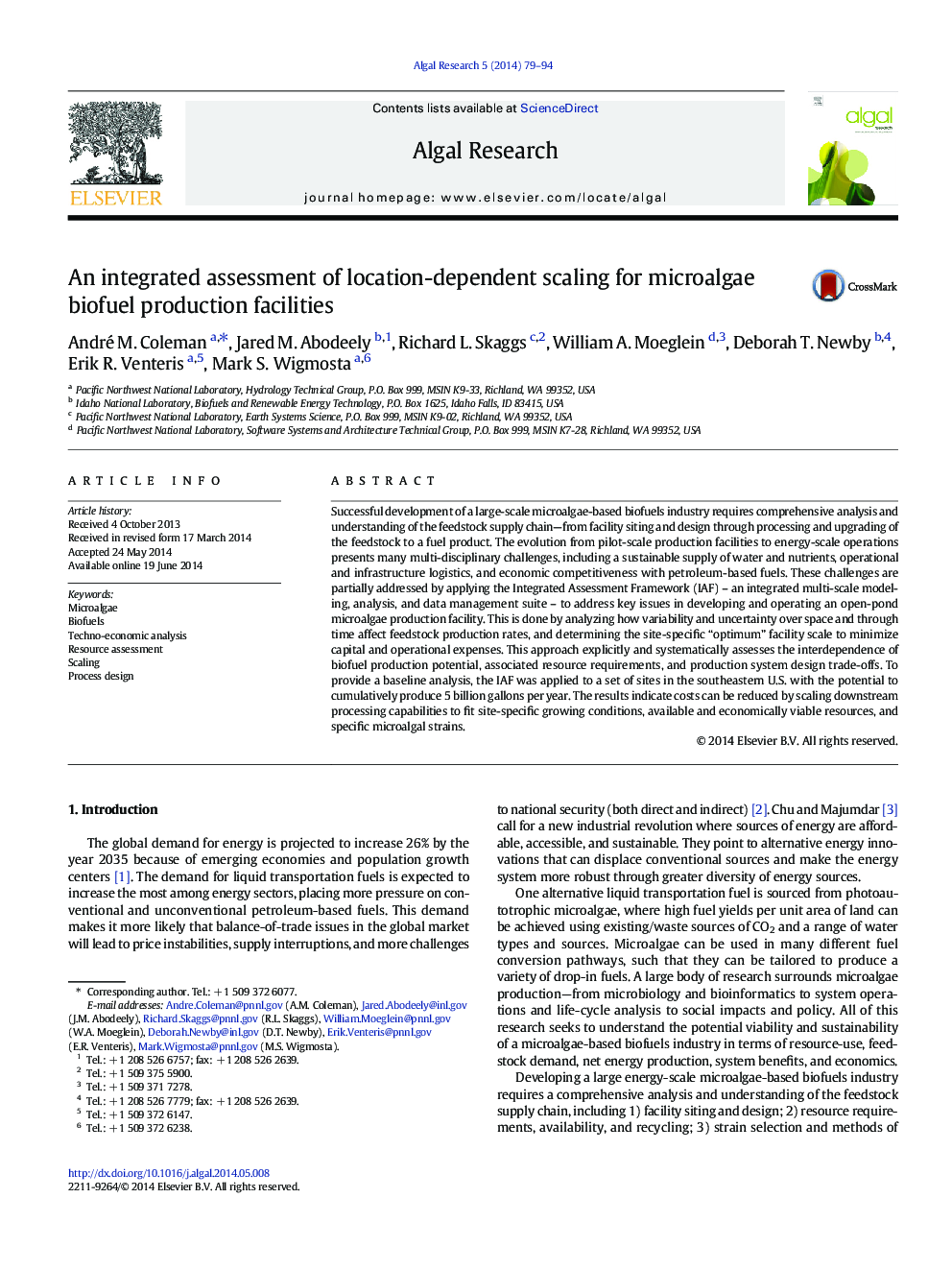| کد مقاله | کد نشریه | سال انتشار | مقاله انگلیسی | نسخه تمام متن |
|---|---|---|---|---|
| 1742105 | 1521826 | 2014 | 16 صفحه PDF | دانلود رایگان |
• Model of production, resources, logistics, energetics, cost, and design trade-offs
• Method to scale production facilities in order to minimize costs and uncertainty
• Site design scaling is non-linear and identifies trade-offs and economies of scale.
• The “production duration curve” captures magnitude and duration of productivity.
• The use of average annual or maximum production rates is not ideal for TEA.
Successful development of a large-scale microalgae-based biofuels industry requires comprehensive analysis and understanding of the feedstock supply chain—from facility siting and design through processing and upgrading of the feedstock to a fuel product. The evolution from pilot-scale production facilities to energy-scale operations presents many multi-disciplinary challenges, including a sustainable supply of water and nutrients, operational and infrastructure logistics, and economic competitiveness with petroleum-based fuels. These challenges are partially addressed by applying the Integrated Assessment Framework (IAF) – an integrated multi-scale modeling, analysis, and data management suite – to address key issues in developing and operating an open-pond microalgae production facility. This is done by analyzing how variability and uncertainty over space and through time affect feedstock production rates, and determining the site-specific “optimum” facility scale to minimize capital and operational expenses. This approach explicitly and systematically assesses the interdependence of biofuel production potential, associated resource requirements, and production system design trade-offs. To provide a baseline analysis, the IAF was applied to a set of sites in the southeastern U.S. with the potential to cumulatively produce 5 billion gallons per year. The results indicate costs can be reduced by scaling downstream processing capabilities to fit site-specific growing conditions, available and economically viable resources, and specific microalgal strains.
Figure optionsDownload as PowerPoint slide
Journal: Algal Research - Volume 5, July 2014, Pages 79–94
